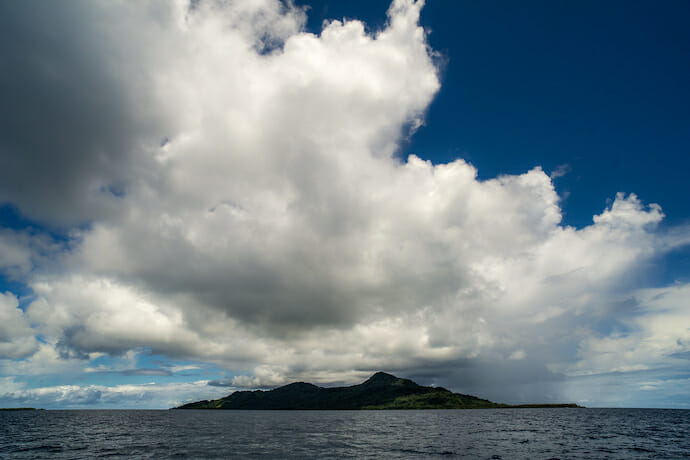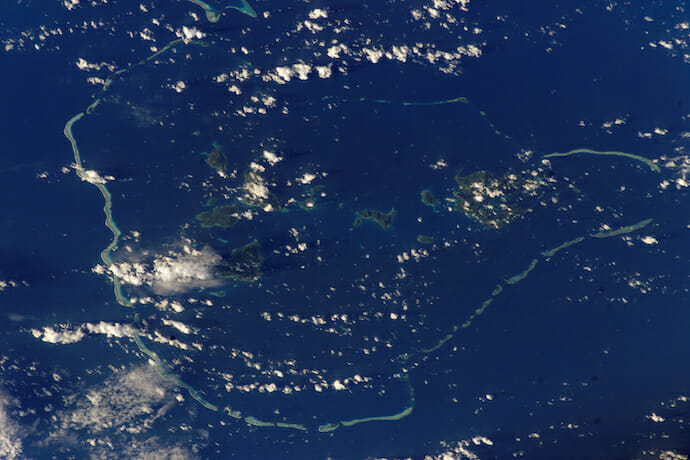
The United States of America and Asia
It is almost 75 years since the end of the Second World War. After the end of its titanic struggle with the Imperial Japanese Empire, and with the rise of an authoritarian and expansionist China, it is time for the United States to establish a more permanent presence in the Pacific. Prior to the rise of the People’s Republic of China, the Pacific area was calm, and the dominance of the United States was never questioned. But with the passage of time, and with the changing circumstances of the balance of power in the Indo-Pacific region, it is time for the U.S. to consolidate its position in the Pacific. To make its position unassailable both economically and politically, the United States should offer entrance into the Union of the United States, to the three countries that have been in a Trusteeship or a Compact of Free Association (COFA) with the United States since the end of Second World War.
The reasons for this are several-fold.
With China’s debt trap policies to small and mostly impoverished nations in the mid-Pacific, the balance of power in the Indo-Pacific region is in flux. While Australia has increased its attention to this growing geopolitical threat, Australia’s largest trading partner is China, and Australia ranks as the number 6 trading partner for China. While political relations between Australia and China could change again, tensions between Canberra and Beijing have been on the rise recently with 72% of Australians saying that the Australian government has allowed too much Chinese investment into Australia. Since Australia is an independent nation, and with there being a sizable minority of Australians with Chinese ancestry, 1.2 million out of a population of 25.2 million, it is not inconceivable that the political relations between the two countries could reverse course with Australia choosing China over the United States in any military confrontation between the two countries.

While the U.S. has had good relations between the affected countries in the COFA, in the past decade there have been flashpoints between the U.S. and the Marshall Islands, the Federated States of Micronesia and the island nation of Palau. The United States has defaulted on agreements with the countries in the COFA, in particular, the Marshall Islands where promises for medical care and insurance have been broken by the United States. There is an enormous concern in the FSM and in Palau over the future of health care which will end under the COFA in 2023. As a result, both China and Taiwan have been pouring money into Palau and in the FSM while the U.S. stands idly by. In particular with the FSM, China has been actively putting money into the FSM’s infrastructure needs and recently put $2 million in the FSM’s retirement fund as a gift
The Marianas Island Chain, Sovereign U.S. Territory
At the present time, the only sovereign presence that the United States has in Asia is the Marianas Islands. The Marianas are divided in political control between the island of Guam, and the other islands. Guam was acquired by the U.S. at the end of the Spanish-American War and has been in a territorial status with the U.S. since 1898 after it was ceded to the U.S. by Spain by the Treaty of Paris. The other islands in the Marianas Island chain are typically referred to as the Northern Marianas Islands. The Northern Marianas were taken from the Japanese in 1944 and have been sovereign U.S. soil since 1986 when it became a Commonwealth of the United States. However, it is not the same as being a state of the Union.
The Chinese have been aggressive in fomenting problems for the United States by using investment in the form of casinos and rising discontent among the population of the Northern Marianas island group.
While the Marianas should eventually be admitted into the Union, it is the 3 nation-states that have a Compact of Free Association with the U.S. that should be offered statehood first.
The Federated States of Micronesia
The Federated States of Micronesia (FSM) have been in a Compact of Free Association with the United States since 1983. The FSM has one of the largest Exclusive Economic Zones (EEZ) in the world. Spread among a longitudinal distance of almost 1,678 miles, the FSM has four principal islands and states which are Yap, Chuuk, Pohnpei, and Kosrae. The island group with the highest population density is Chuuk, with a population of 54,595. It is the Chuuk Atoll which would be of the most interest militarily to the United States. From 1918 to 1945 the Chuuk atoll was known as Truk and was an important naval base for the Imperial Japanese Navy. Now known as the Chuuk Atoll, the atoll is the largest atoll in Micronesia. The atoll consists of a protective reef 140 miles around, enclosing a natural harbor of 49 by 31 miles. The Chuuk Atoll is only a 4-hour flight from mainland China. China would like to establish its own naval base there, and breakthrough the 3 island chains it feels is hemming it in.

To this end, the Chinese government has increasingly been supplying grants and using other forms of economic warfare to undermine the COFA agreement between the U.S. and the FSM, which is set to expire in 2023. Added to this political crisis is the upcoming vote for secession by Chuuk from the FSM in 2020.
The Trump administration has recognized the danger of China tearing the FSM away from the U.S. political and military orbit. President Trump recently hosted a summit with the three leaders of the COFA in a state visit by the political leadership of the three nations to Washington. Secretary of State Mike Pompeo recently met with the leaders of the COFA in Kolonia FSM on August 5th and announced the U.S. intention of re-negotiating COFA.
Palau
Palau’s relationship with the United States continues to be strong, with the U.S. staging the first military exercise with Palau security forces in April of 2019 in over three decades.
The island of Palau is to the west of the island of Mindanao in the Philippines, so it has a strategic value that is priceless to the U.S. It is essential for the U.S. that it remains in the U.S. political and military orbit.
The Marshall Islands
The United States, as noted above, has reneged on several promises to the Marshall Islands in regard to the health care promised to the people of the Marshall Islands when the COFA was signed. The U.S. must live up to its commitments it has made to the people from the Marshall Islands and do so immediately.
The Marshall Islands is a country fighting for its survival as it is only 6 feet above sea level and the rising sea is threatening to submerge the nation.

The economic, political and military ties between the U.S. and the Marshall Islands are strong, and the U.S. has a powerful military presence in the Marshall Islands. The Kwajalein Atoll is of particular importance to the U.S. defense effort and hosts a missile testing site as well as an anchorage for the U.S. Navy.
The geopolitical and military benefits to the United States by offering statehood to those nations in COFA.
By allowing statehood, the United States would once and for all deny the Central Pacific to any power that would threaten access to Asia by the United States and the United States ability to trade with the booming economies of Asia. In addition, with the FSM’s EEZ and access to the world’s last virgin fisheries, the economic potential for deep ocean farming is unlimited.
In Sun Tzu’s masterpiece on The Art of War, he writes that the line between disorder and order lies in logistics.
The most forward military base the United States has is in the Marianas Island group. While in an excellent position for forward-based airpower, the United States lacks a secure naval base in Asia which would be able to become a forward logistical base with supplies, repair shipyards, anchorage for capital ships, a jumping-off point for U.S. submarines and a launching point for long-range and intermediate-range cruise missiles. The Chuuk Atoll is a perfect location for such a base. By denying China access to this major and natural harbor, and if the U.S. established a naval presence at the Chuuk Atoll, the U.S. would secure its internal lines of communication and supply for any war effort it might be forced to implement to contain the political and military aggression of China. Palau would be the Chuuk’s Atoll left flank, preventing any hostile power from flanking the Chuuk Atoll, and providing security to the U.S. missile ranges in the Marshall Islands.
In order for the people of the FSM, Palau and the Marshall Islands to accept such an offer, the United States would need to make an offer that these nations would want to accept. This would include a coherent and sufficient infrastructure improvement for the FSM, Palau, and the Marshall Islands, providing good and inexpensive medical care to the populations of these countries, and investing in the educational opportunities of the population. The U.S. should make these new states a tax-free investment zone and upgrade their energy manufacturing capabilities using renewable energy so as not to bring pollution to the mid-Pacific.
It is for these reasons that the U.S. should move expeditiously in securing these strategic points in the Western Pacific and denying them to China.

